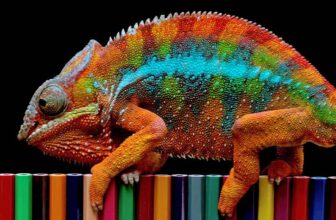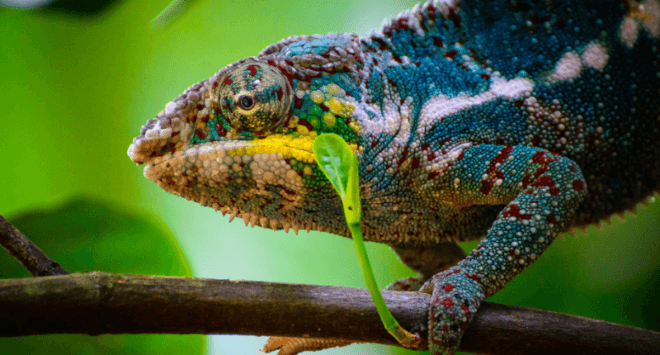One of the most interesting lizards, if not animals, on the planet, is the chameleon. Some of them are so spectacularly unique, that if one were to describe a chameleon vocally, it would sound like some mystical, made-up animal. Their eyes can move 360 degrees, their tongues have a length comparable to that of their bodies, and they can change their skin tone to fit with their surroundings. If you are lucky enough to acquire one of these fascinating Chameleon Types in your home, we have some great news. They make terrific pets!
Pet chameleons are amazing lizards, who have both beautiful coloration and very interesting behaviors. In this article, we will tell you more about chameleons, their intriguing appearance, what the best species of chameleon are to keep as pets, and then go over how to care for one.
Chameleon Types
The slow-moving, overly colorful lizards known as chameleons reside in trees and are some of the world’s most fascinating animals. Belonging to the Chamaeleonidae family, Earth gives home to more than 200 chameleon species. There is even a species subfamily known as Brookesiinae which includes pygmy chameleons. Each chameleon type is different, but all species share certain unique features that include mood-controlled coloration changes to their bodies, prehensile tails, and peculiar techniques for hunting.
As with any other type of animal with a load of species, certain species of chameleons make better pets than others. For instance, the Veiled, Flap-Necked, or Jackson’s chameleons are terrific choices for a beginner chameleon pet owner, while those looking to keep a small chameleon in a glass terrarium may choose to go with one of the Pygmy types.
More seasoned reptile pet owners looking for a more challenging animal might consider a Four-Horned or Meller’s chameleon. Those looking for a particularly eye-catching variant, if money is no object, may consider the Pather chameleon such as an Ambanja or Ambilobe.
The List Of Great Pet Chameleon Types Choices
For those looking for a great pet, as well as an interesting animal to care for and observe, a chameleon may be exactly what you need. We studied over 200 species to dwindle down the list to the 17 that make the best pet types. Let’s learn more about these chameleons.
1. Panther Chameleon
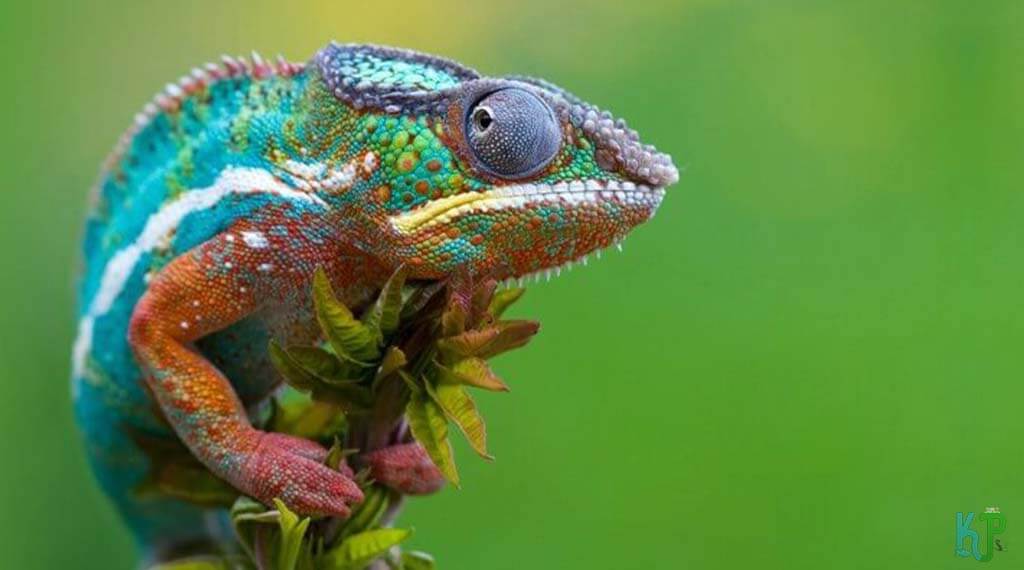
One of the most popular species of pet chameleon is the Panther chameleon (Furcifer pardalis) and the demand for them makes them quite expensive. Adults can cost around $300, but the particularly vivid colored ones could run as much as $500. They are popular because they are tolerant of handling and are easy to care for.
Beyond that, they exude gorgeous, vivid, yet variable color patterns, leading them to be considered among the most colorful species of chameleons in existence. They can be any color from green to yellow to blue, and any shade that falls on the color spectrum in between. They also have a long stripe along the side. While both genders are large, the males are generally larger than females and can be clearly distinguished via the ridges that line the sides of their heads.
These lizards are great for first-time reptile owners as they are tolerant to being handled and interacting with humans, require far less intensive care than many other species variants, and have a set of very basic needs.
2. Veiled Chameleons
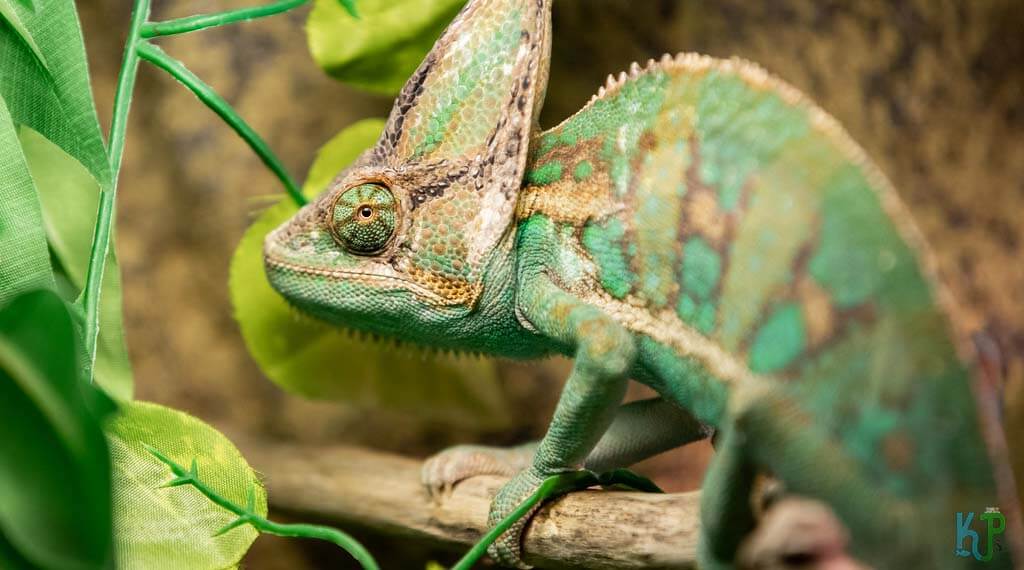
Another popular pet chameleon species with beginners are the Veiled Chameleons (Chamaeleo calyptratus). They are widely available in pet stores and can be acquired for as little as $50. What makes them beginner-friendly is that they are perhaps the easiest chameleon species to care for, only requiring that basic husbandry needs are met for them to thrive. Unlike some other chameleons, however, being handled isn’t their favorite activity.
These chameleons are native to the regions of Saudi Arabia and Yemen, which is a reason why they also go by the title of Yemen Chameleons. Their traditional namesake is due to a big ‘casque’ atop their heads, which resembles a veil, with females having a smaller one than the males of the species.
While not as vivid and variable in coloration, the Veiled species is still very pleasing to the eyes, with a general green base color, and usually adorned with pale blue, yellow, or brown vertical stripes.
3. Jackson’s Chameleons
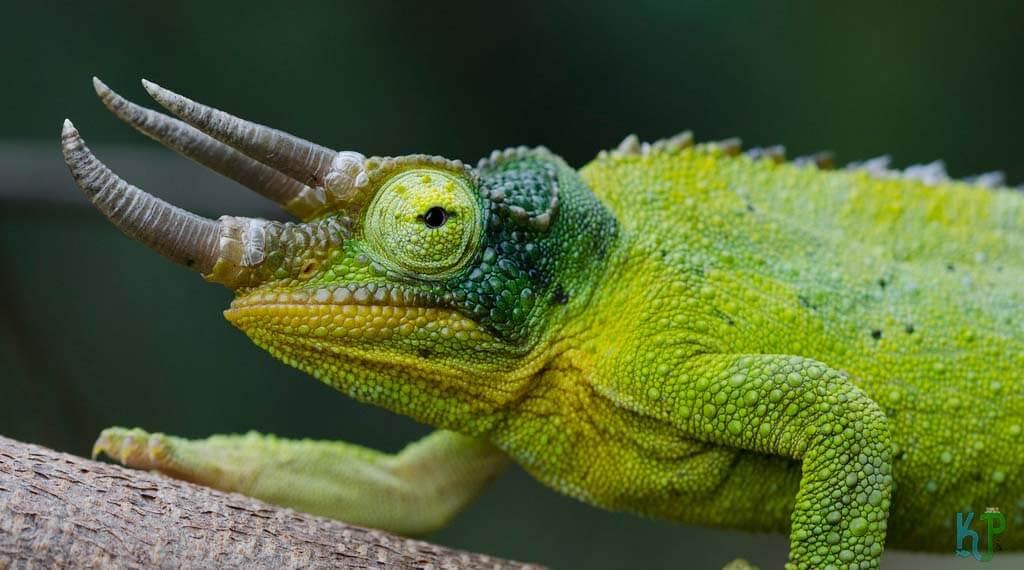
The small species named the Jackson Chameleon (Trioceros jacksonii) hails from Eastern Africa, namely parts of Tanzania and Kenya. The three horns on the head of a male in the species also earned them the name of Three Horned Chameleons. Their horns are part of their appeal and popularity, along with their smaller size. Many pet stores have Jackson’s Chameleons available for less than $100.
The coloring of Jackson’s is a bit basic by comparison to some other chameleon breeds since they are mostly of a solid green shade with darker green or brown markings, rather than a mix of an array of hues. In terms of care, while they are still good beginner pets, they do require more care than other chameleon species.
4. Dwarf Jackson’s Chameleons
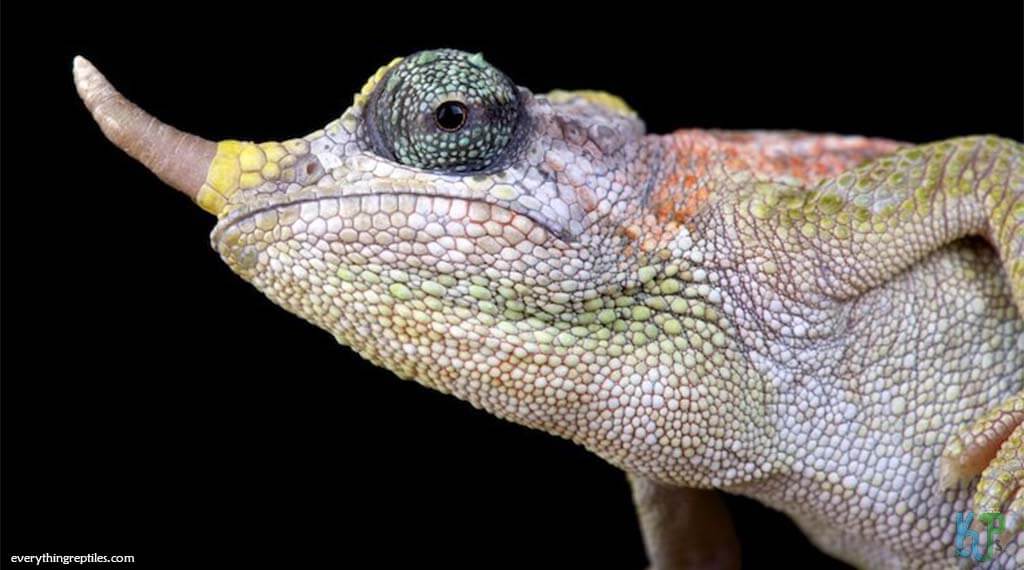
The Jackson’s Three-Horned Chameleon has a subspecies, although it is rare. They are called Dwarf Jackson’s (Trioceros jacksonii merumotaus), inhering their Latin species name from Tanzania’s Mount Meru, the only place they can be found in the world. As is implied by their name, they are a smaller version of Jackson’s Chameleon.
They have some yellow on their heads, but their bodies are overall of a blue-green coloration. Like their larger counterparts, the males have three large horns on their heads, while the females only have one. To protect their native wildlife, Tanzania put strict export regulations in place in 2016, making this a very rare species to find for purchase in the US.
5. Ambilobe Panther Chameleon
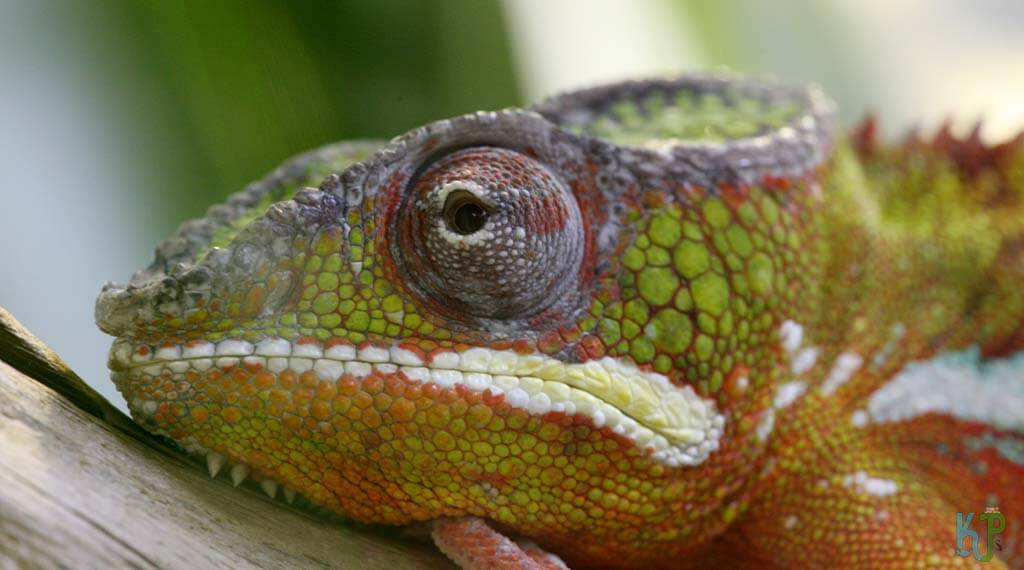
The Panther Chameleon has a number of subspecies, one of which is the Ambilobe (Furcifer pardalis ssp,). This is the most popular of all Panther species to keep as pets, often considered the most stunning in coloration. Their ease of handling and simplicity of care make them even more attractive to beginner pet owners.
Their coloration is very bright, combining vivid fusions of yellow, blue, green, white, and orange. They are very comfortable with being handled, and docile, and while their enclosures are being maintained, they even crawl onto their keeper’s hands. The attractive nature of the Ambilobe comes at a cost, however, with adults costing around $300, but potentially more depending on their coloration variance and size.
6. Four-Horned Chameleons
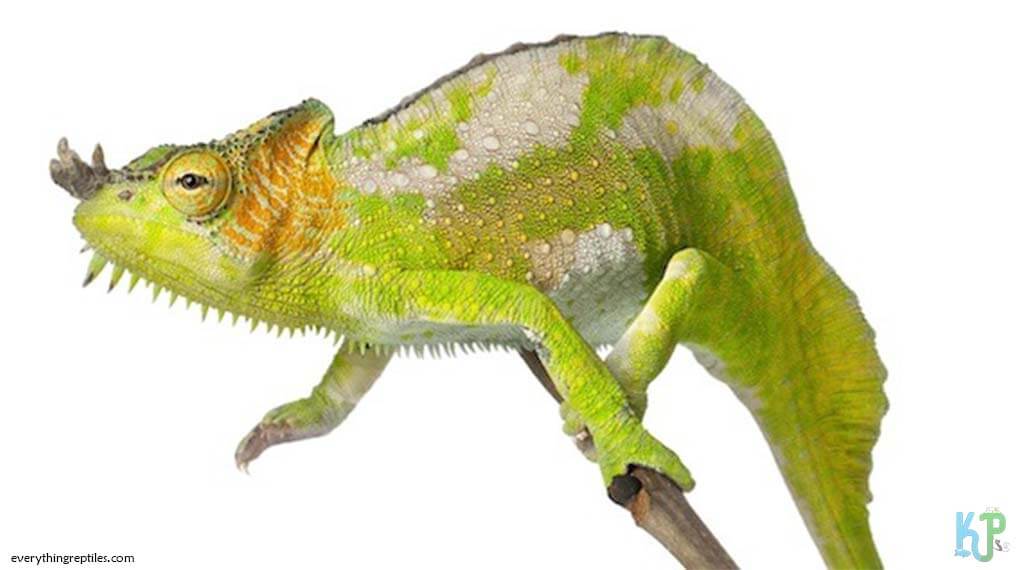
Another relative of Jackson’s Chameleon, sharing many similar characteristics is the Four-Horned Chameleon (Trioceros quadricornis). They have similar coloration, being an overall greenish-yellow, as well as light markings that can be as dark as purple or as light as blue. The Four-Horned species are slightly longer than their counterparts.
The clearest distinction is the fact that they have four horns on their head rather than three, but theirs are smaller in size. They also hail from a different region of Africa, found in Cameroon’s mountainous rainforests. The environment there is cooler, normally not exceeding 80F. It is also an environment with very high moisture levels.
Due to their species’ acclimation to those factors, these chameleons are very sensitive to low humidity and high temperatures, so they require an experienced handler to be kept as pets, as it is not easy to accomplish successfully.
7. Parson’s Chameleons
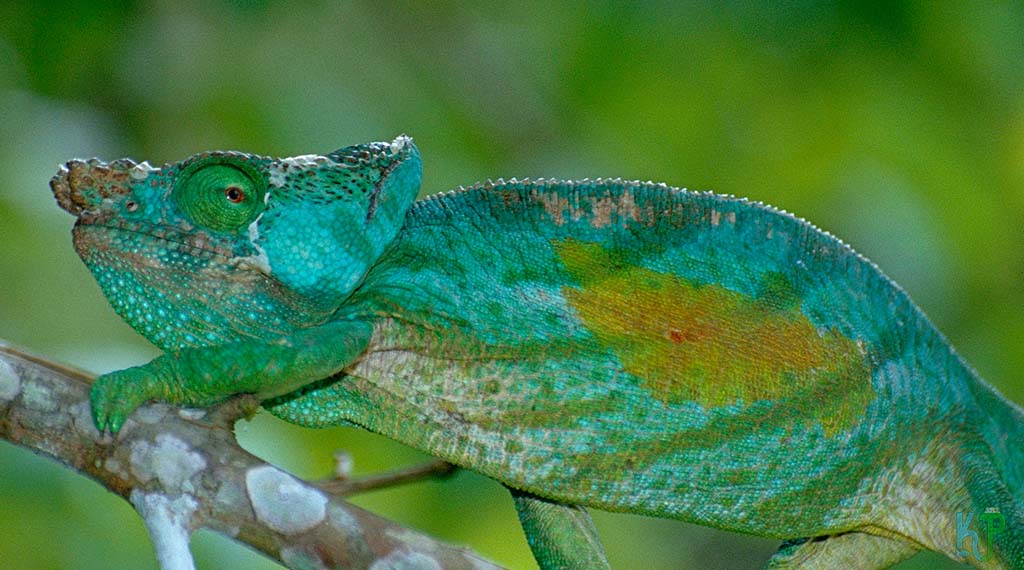
Growing to sizes that can reach 70 cm, the Parson’s Chameleons (Calumma parsoni) are definitely the largest chameleon species known to man. Their size requires them to have a large enclosure, which can be difficult for certain owners to accommodate. In other ways, however, caring for the Parson’s Chameleon is quite similar to the care required by other chameleon species.
There is not much that distinguishes this breed aside from its size. They do exude amazing colorations, with variable hues and patterns that involve combinations of green, yellow, blue, brown, and white. Dark, sizable diagonal stripes line their sides, with some individual chameleons being almost entirely white with green stripes.
While their colors make them popular and appealing to reptile-loving pet owners, their price might be prohibitive, with most of Parsons’ Chameleons costing more than $1,000. It isn’t due to just their coloring either. The majority of eggs hatched by this species take about 18 months to hatch, which makes their breeding quite challenging.
8. Cuban False “Chameleon”
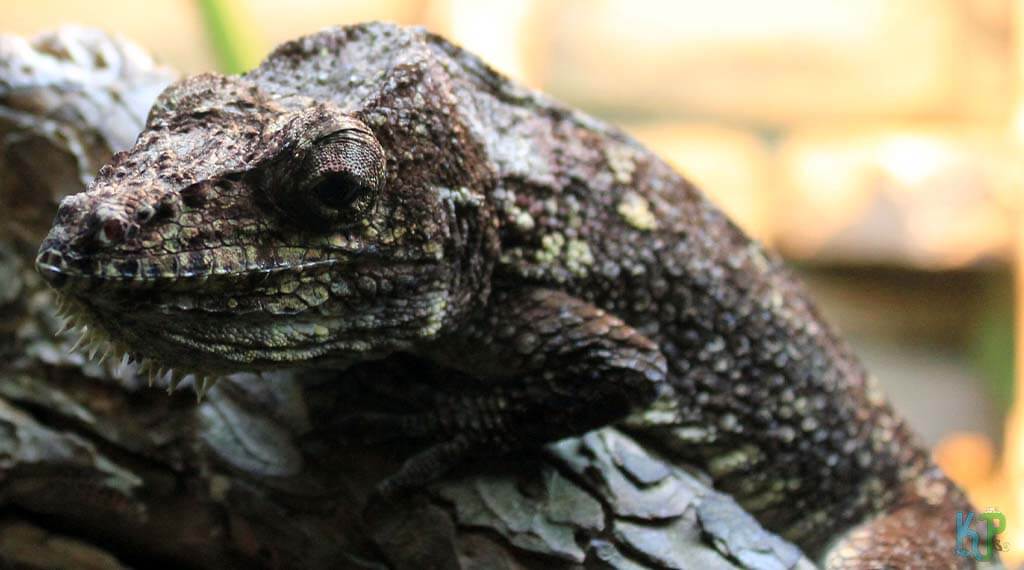
Many would regard the Cuban False (Anolis barbatus) as a chameleon species, but it is really an anole species from the Dactyloidae family. But their characteristics do make them similar to chameleons, including the ability to move their eyes around independently of each other, as well as a casque on their heads.
They are also nowhere near as colorful as chameleons, typically just existing in a grayish-tan color. They do make interesting pets, however, and are lizards that are quite less expensive than many of the other members of this list.
9. Pygmy Chameleon
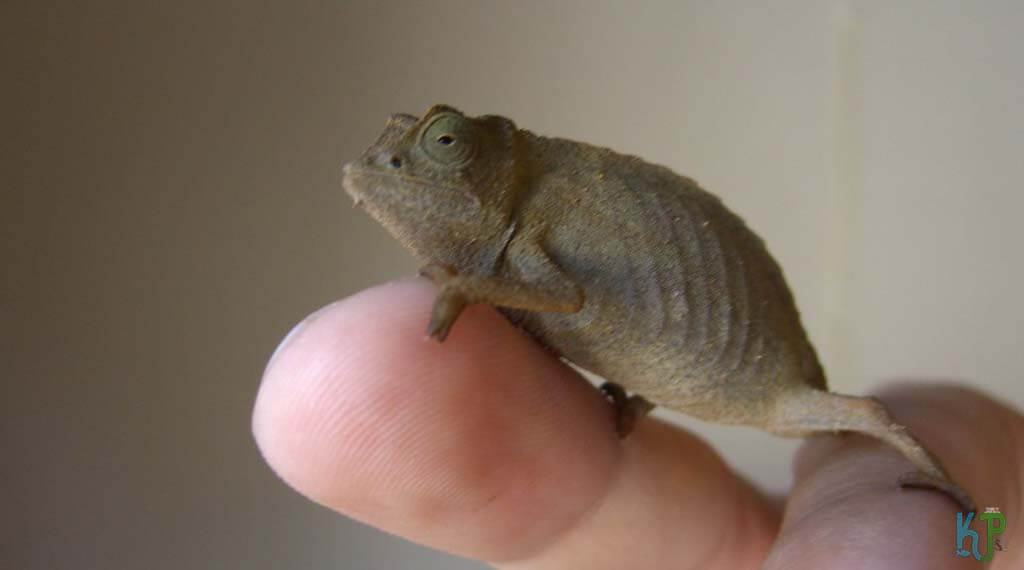
The Pygmy chameleons vary among several different species but are collectively sometimes referred to as African Leaf Chameleons. But these guys are quite different than this list’s other chameleons. For one, they don’t grow to a size that exceeds three inches. Unlike most chameleons that have prehensile tails that help them to climb trees, Pygmies live in leaf litter, therefore it was not evolutionary necessary for them to have long tails.
They make very cute pets, and most of them can be acquired for less than $200. They make a fine pet choice for someone looking for a unique, but not large lizard species to house as a pet in their home.
10. Bearded Pygmy
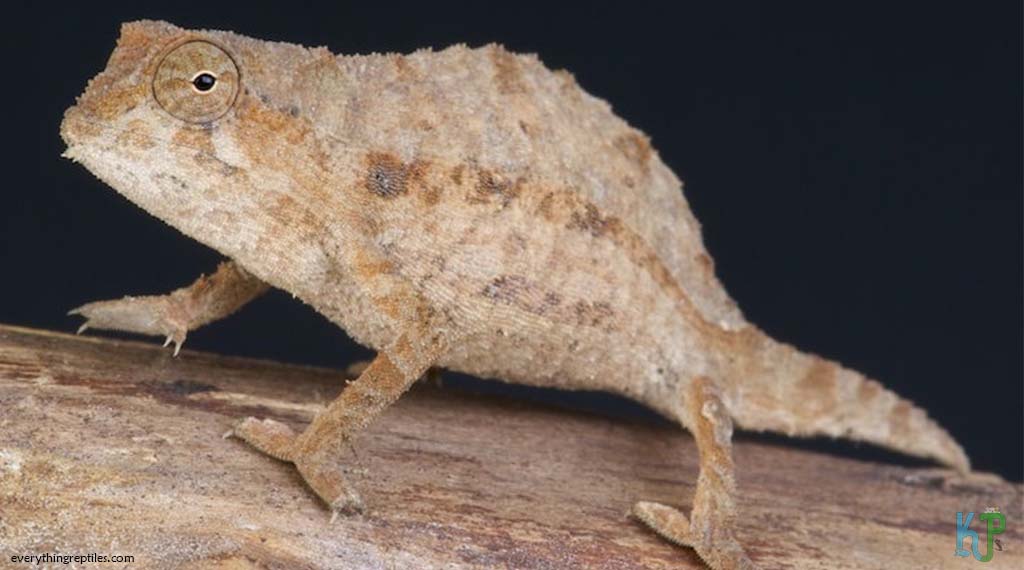
One of the many Pygmy chameleon species is the Bearded Pygmy (Rieppeleon brevicaudatus), who, like most members of their Rhampholeon family does not live in trees. They are plainer than many other chameleons, only doing nominal color changing, generally staying at a muted tan or brown coloration. Living amongst leaves, however, that color is perfect for blending with their surroundings. When viewed from the side, the Bearded Pygmy has a similar color and shape as that of a small leaf.
11. Usambara Pitted Pygmy
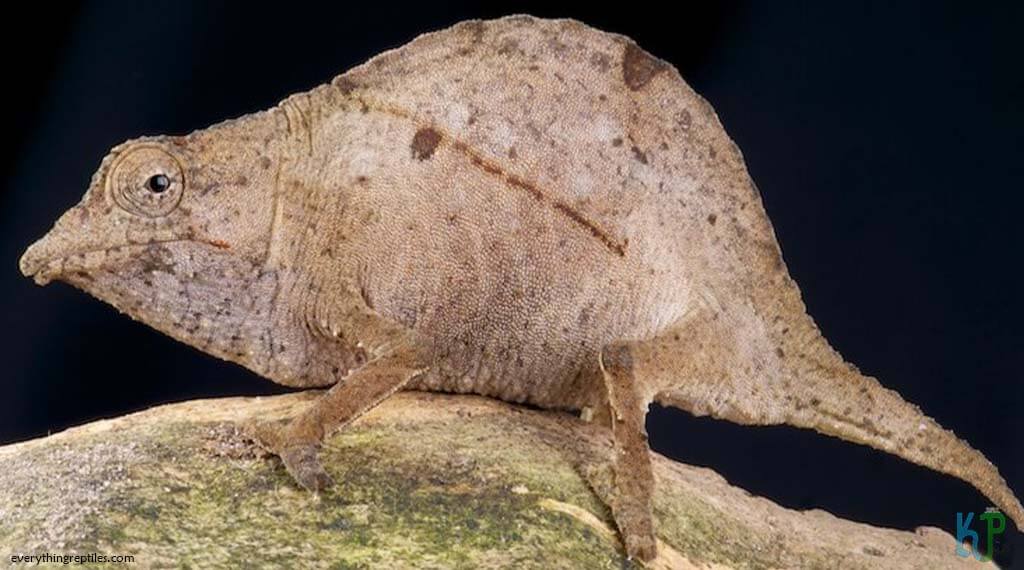
Another small Pygmy Chameleon species is the Usambara Pygmy Chameleon (Rhampholeon temporalis). They share many of the same characteristics as species in their genus, and their coloration is generally brown, tan, or gray, they are lined with patterns that make them resemble a dead leaf. Many also have diagonal stripes lining their bodies. Their lips are flattened, resembling the beak of a bird, and along with their long tails, distinguish them from other Pygmies.
While they are cheaper than many other chameleon species, acquirable for around the $50 price point, they require very specific humidity requirements, so for proper care, they require an experienced reptile keeper.
12. Carpet Chameleons
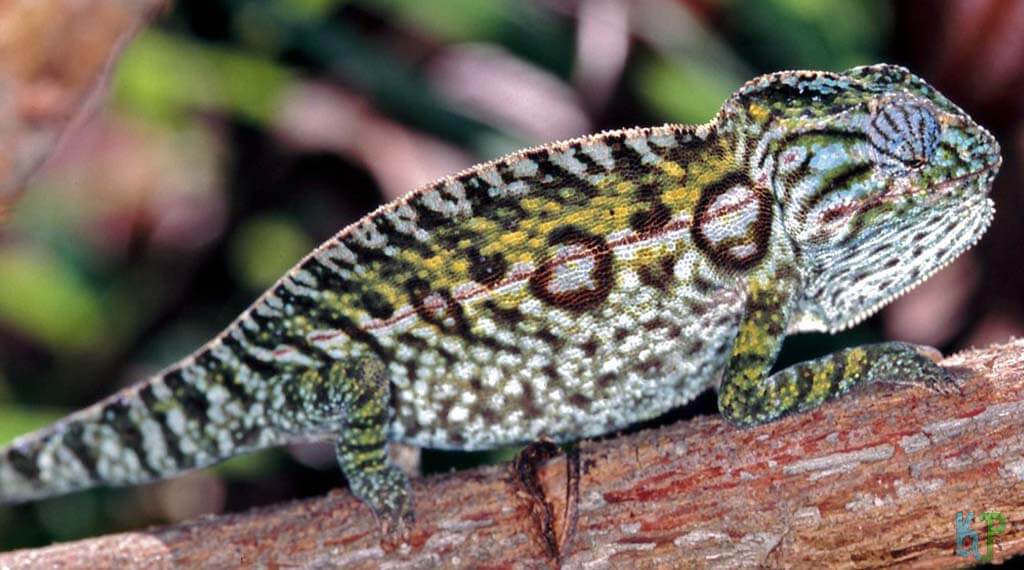
An interesting type of Panther Chameleon found only on the Island of Madagascar off the coast of Eastern Africa, is the brightly colored Carpet Chameleon (Furcifer lateralis). They are versatile in terms of habitat, and able to exist in high altitudes, deserts, and rainforests alike. While they are larger than the aforementioned Pygmies, they are not as big as other chameleon species. But their subdued size is more than compensated for in their coloration.
The Carpet Chameleons have dark patterns along any combination of green, red, blue, orange, yellow, or purple colored bodies, along with spots on their sides. While they are not as expensive as some other chameleon breeds, they could still run nearly $200.
13. Ambanja Panther Chameleon
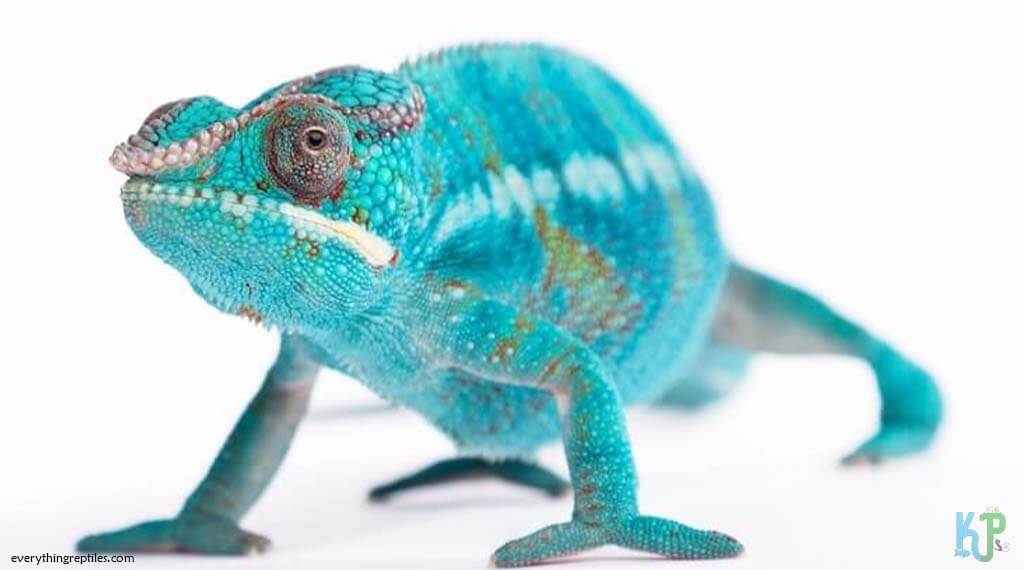
Another popular breed of Panther Chameleon is the Ambanja (Furcifer pardalis ssp.) Like most other Panther chameleons the Ambanja is large and has a long, prehensile tail to help it navigate in the trees. This species is hard to mistake for another, as they are a bright, electric blue in color, though some have some greens, reds, and purple mixed in. It is the blue colors that make them extremely popular chameleon pets.
Their care is not overly difficult, comparable to most other chameleon species, but due to their strict requirements of high humidity, as well as their hefty price tag, they are not the species recommended for beginners.
14. Meller’s Chameleons
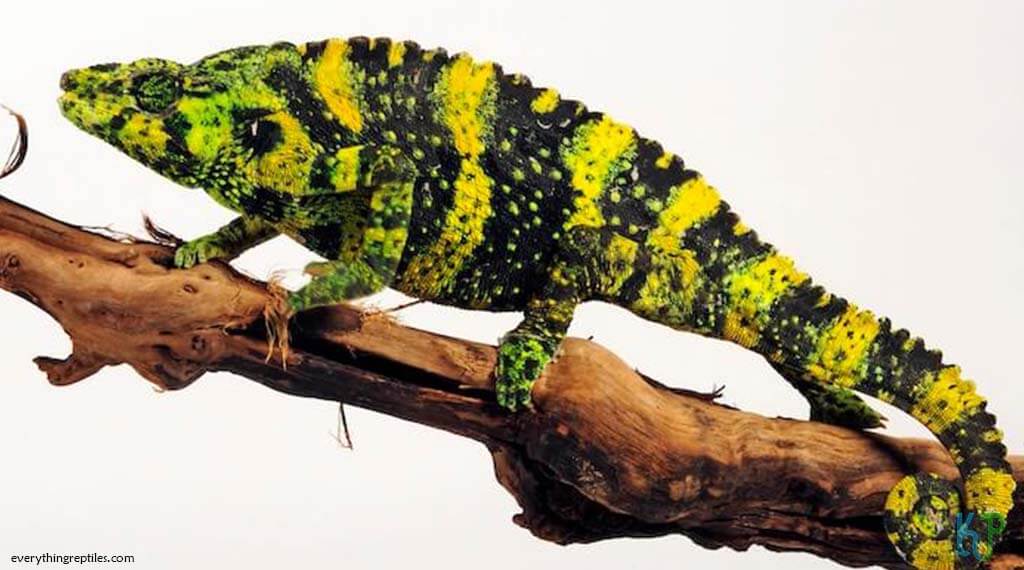
The Meller’s Chameleon (Trioceros melleri) is another large lizard found in the eastern African regions of Tanzania, Malawi, and Mozambique. Outside of those found in Madagascar, these are the biggest chameleons in the world, growing to as long as 2 feet. They are large enough to hunt not only insects in the wild but also birds.
Their large size, as well as the single small horn on top of their snout, unlike the more traditional triad, also lend them the name of the Giant One-Horned Chameleon. Their bodies are lined with yellow and green vertical bars.
As far as care, this lizard needs expert levels of it. They are very sensitive to stress and respond poorly to subpar husbandry, so they are not a great breed for beginners to start with as their pets.
15. Senegal Chameleon
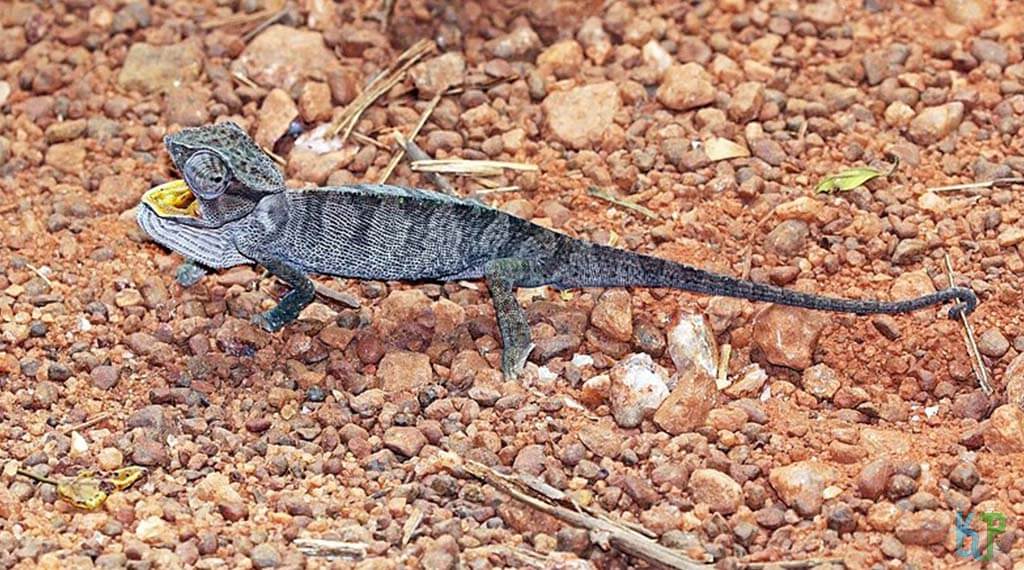
Another popular chameleon breed due to its small size even at an adult age and its shy temperament is the Senegal chameleon (Chamaeleo senegalensis). While they are larger than the Pygmies, they are not as big as the Panther chameleons. They have a very attractive look, though their colors vary based on their surroundings and their emotional state. Most are seen as soft, but solid green, often with darker spots.
While generally docile, they can be unnerved when handled, so their tolerance of being held is relatively low. Experienced keepers can, however, allow the Senegal chameleon to thrive as a pet, especially if they are not interested in handling them. They also require high humidity to survive and stay healthy, so new keepers would have a tough time accommodating the proper setup.
16. Fischer’s Chameleons
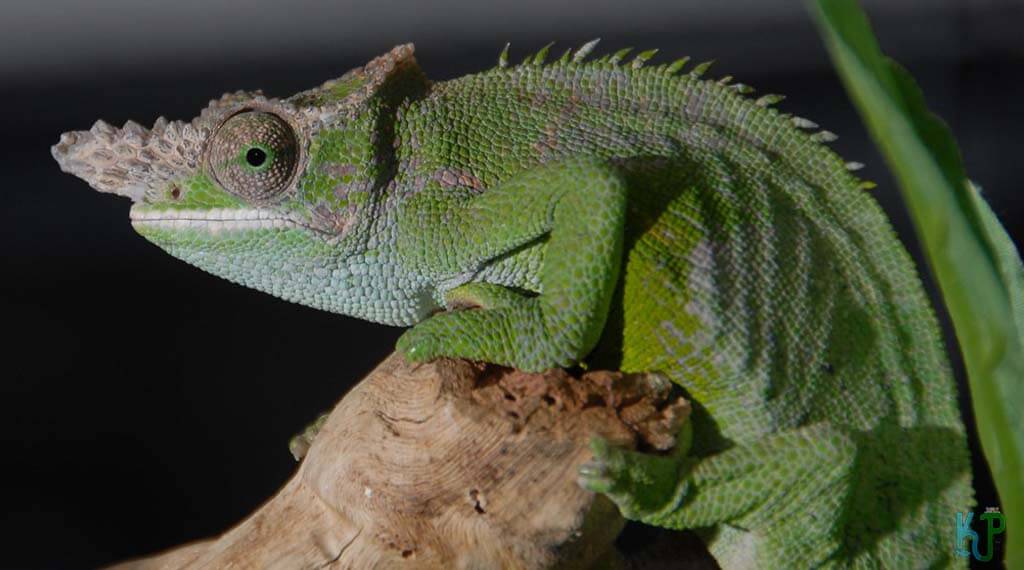
Found in the Nguu mountain ranges of Tanzania, the Fischer’s chameleons (Kinyongia Fischer ssp.) are quite a unique chameleon species. Their exceptional long tails have some calling them Monkey-Tailed chameleons, and their two long horns have others referring to them as the Western Usambara Two-Horned Chameleon.
Their coloration is generally a variety of green hues, that can be as vivid as lime-green, but also as dark as a greenish-brown.
17. Flap Necked Chameleons
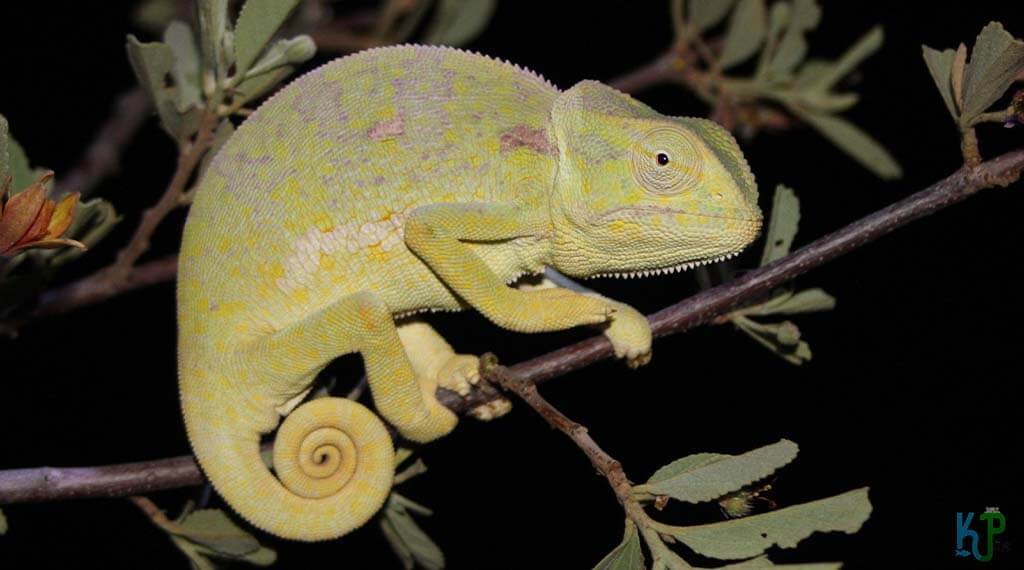
The final chameleon on our list is a species popular with beginners and it is the South African Flap-Necked Chameleon. They are easy to house since they are tolerant of most humidity levels, making them easy for beginners to host. They are also not extremely large, so if a keeper does their research, these chameleons can be a particularly enjoyable breed to keep in the home.
Their look is typical of most common chameleons, save the slaps on their neck which make them stand out. They have long tails, a small casque on top, and range in a variety of green coloring. Some even have a pattern that is either orange or brown.
So, which of these chameleon species appeal most to your taste in reptiles and align most closely with your experience level? We hope that this was an informative piece that allows you to pick a species of chameleon that stands out to you the most as a potential future pet.
Conclusion:
In conclusion, chameleons are an exciting and diverse group of reptiles that make great pets for those who love exotic animals. With a wide range of Chameleon Types and color morphs to choose from, there is a chameleon out there to suit every taste.
If you’re considering getting a chameleon as a pet, we recommend researching the different species and morphs to find the best fit for you. And if you are interested in Panther chameleons, be sure to check out our next article on what to expect for Panther chameleon prices. This will help you understand the costs associated with owning this beautiful species.
Frequently asked questions:
How many types of chameleons are there?
There are over 180 species of chameleons, which are found in different parts of the world. They are mainly found in Madagascar, Africa, and some parts of Asia. Chameleons are known for their ability to change color, which they use for camouflage and communication.
What type of animal is a chameleon?
A chameleon is a type of lizard that belongs to the family Chamaeleonidae. They are known for their ability to change color and for their independently moving eyes.
How much does a chameleon cost?
The cost of a chameleon can vary depending on the species, the location, and the breeder. Some species of chameleons can be relatively inexpensive, while others can be quite costly. A common pet species such as veiled chameleon can cost around $50 to $200, while some rare species can cost several hundred or even thousands of dollars.



